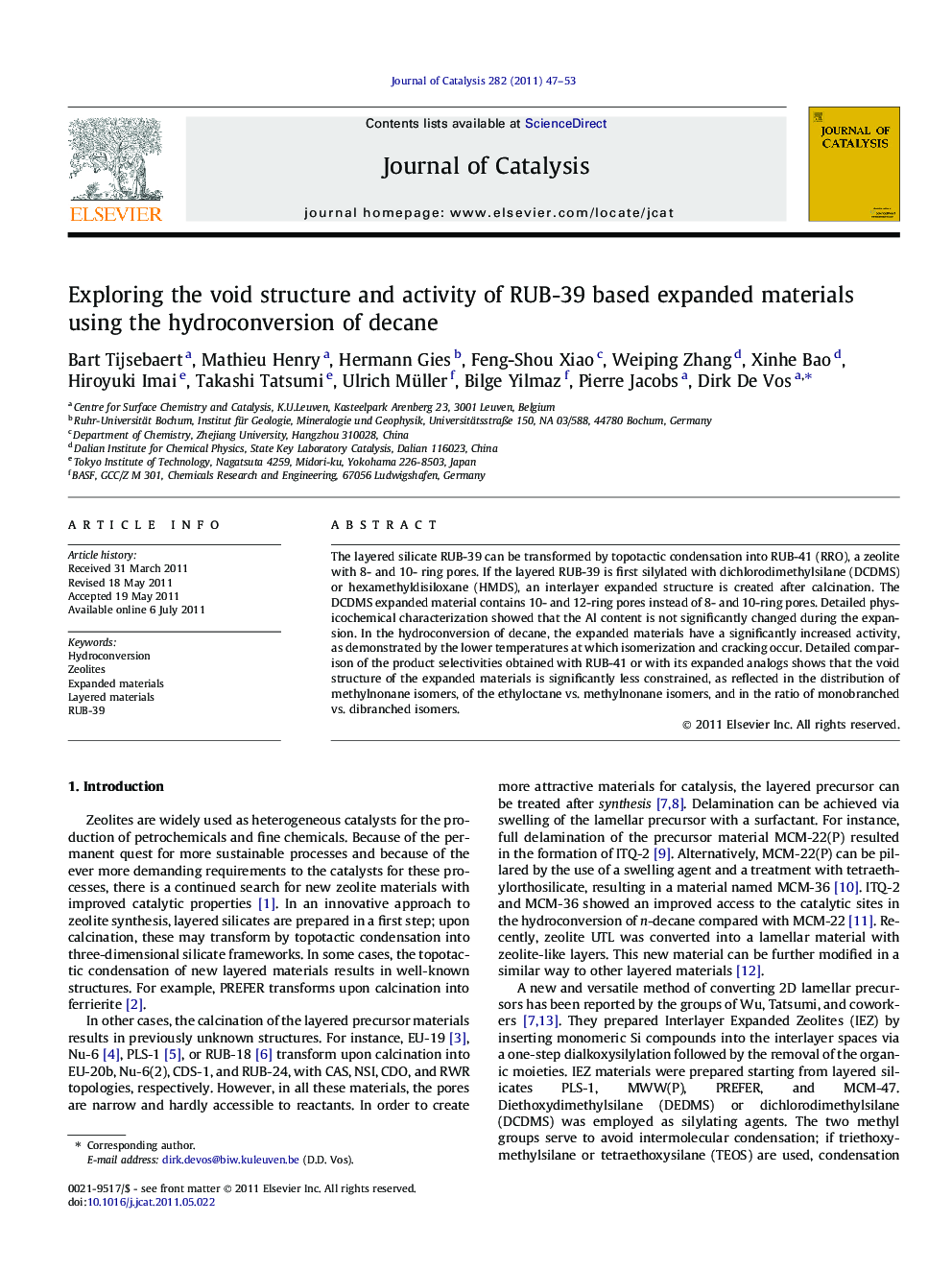| Article ID | Journal | Published Year | Pages | File Type |
|---|---|---|---|---|
| 61618 | Journal of Catalysis | 2011 | 7 Pages |
The layered silicate RUB-39 can be transformed by topotactic condensation into RUB-41 (RRO), a zeolite with 8- and 10- ring pores. If the layered RUB-39 is first silylated with dichlorodimethylsilane (DCDMS) or hexamethyldisiloxane (HMDS), an interlayer expanded structure is created after calcination. The DCDMS expanded material contains 10- and 12-ring pores instead of 8- and 10-ring pores. Detailed physicochemical characterization showed that the Al content is not significantly changed during the expansion. In the hydroconversion of decane, the expanded materials have a significantly increased activity, as demonstrated by the lower temperatures at which isomerization and cracking occur. Detailed comparison of the product selectivities obtained with RUB-41 or with its expanded analogs shows that the void structure of the expanded materials is significantly less constrained, as reflected in the distribution of methylnonane isomers, of the ethyloctane vs. methylnonane isomers, and in the ratio of monobranched vs. dibranched isomers.
Graphical abstractStarting from the layered precursor RUB-39, a interlayer expanded material containing Al is prepared. The results of the decane hydrocracking prove that the pores are effectively expanded in comparison with the related zeolite RUB-41.Figure optionsDownload full-size imageDownload high-quality image (162 K)Download as PowerPoint slideHighlights► The layered precursor of RUB-41 was expanded with DCDMS and HMDS. ► Expanded materials show an increased activity in the hydroconversion of n-decane. ► The distributions of the reaction products indicate an expanded pore structure.
